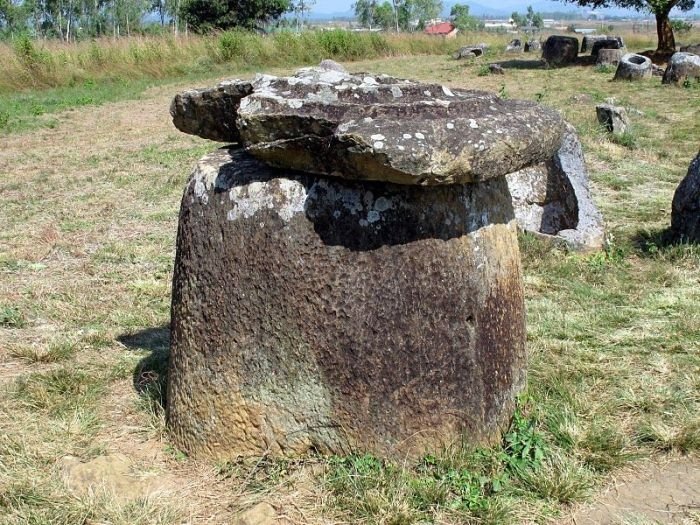|
|
The Plain Of Jars, Laos
|
Not to be confused with stone lids are the stone discs. The stone discs have at least one flat side and are grave markers which were placed on the surface to cover or mark a burial pit. These gravemarkers appear more infrequently than stone jars, but are found in close proximity. Similar are stone gravemarkers; these stones are unworked, but have been placed intentionally to mark a grave. To the north of Xieng Khouang and extensive network of intentionally placed largely unworked stones marking elaborate burial pits and chambers are known as ‘standing stones of Huaphan’. These following the investigations by Colani were dated to the Bronze Age. Material associated with the stone grave markers in Xieng Khouang however, is similar to the stone jars artefacts.
The jars lie in clusters on the lower footslopes and mountain ridges of the hills surrounding the central plateau and upland valleys. Several quarry sites have been recorded usually close to the jar sites. Five rock types are known:sandstone, granite, conglomerate, limestone and breccia.
The majority of the jars are sandstone and have been manufactured with a degree of knowledge of what materials and techniques were suitable. It is assumed that Plain of Jars' people used iron chisels to manufacture the jars although no conclusive evidence for this exists. Regional differences in jar shape have been noted. While these differences in most cases can be attributed to choice and manipulation of rock source, form differences, such as small apertures and apertures on both ends (double holed jars) which would affect the use of the jar have been recorded in one district only.
The cave at Site 1 is a natural limestone cave with an opening to the northwest and two man-made holes at the top of the cave. These holes are interpreted as chimneys of the crematorium. The French geologist and amateur archaeologist Madeleine Colani excavated in side the cave in the early 1930 and found archaeological material to support a centralized crematorium theory. Colani also recorded and excavated at 12 Plain of Jar's sites and published two volumes with her findings in 1935.
|
|









